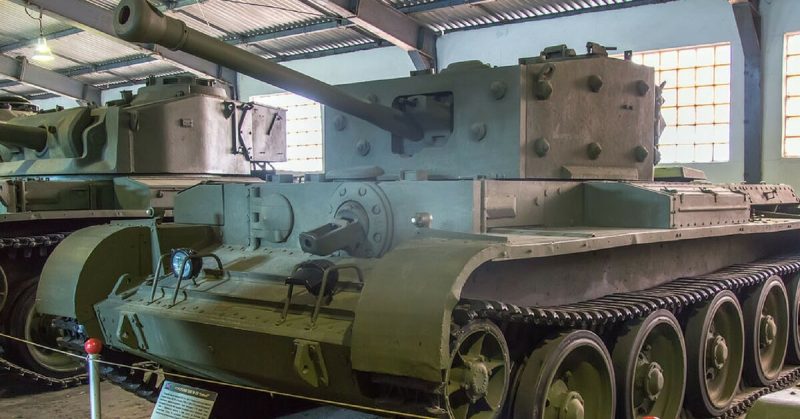Perhaps the most balanced British tank that came out of the Second World War, the Cromwell, named after the English Civil War leader Oliver Cromwell, offered a reasonable armor protection combined with enough firepower to take on its German counterparts. But the main trait of this tank was its excellent V12 Meteor petrol engine produced by Rolls Royce which ran at 600 horsepower.
It was capable of achieving the maximum speed of 40 mph (64 km/h) and thus belonged to the cruiser tank category. Cromwell, official markings being Tank, Cruiser, Mk VIII, Cromwell (A27M), was the direct successor of the Crusader tank, produced early during the war. The tank saw its first action as a support tank for the British marines that landed in Normandy in 1944.
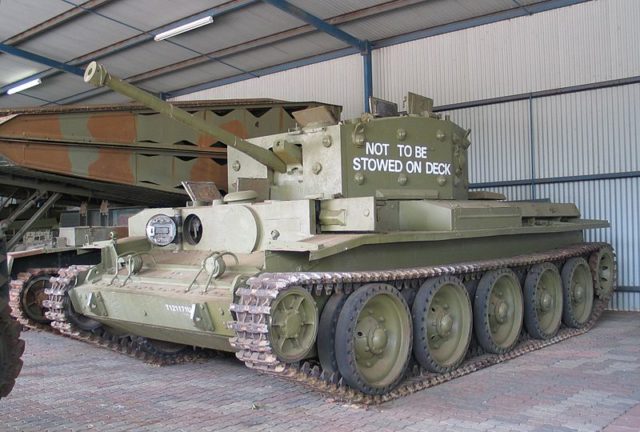
The first talks of development date back to 1940 with the prototype designs codenamed A23 and A24. The main problem for British tanks at the time was the cooling system. It caught the armored forces like an epidemic, as Crusader tanks tended to overheat and become useless.
Thus, the tank board decided to split the Cromwell prototypes into three different projects, in order to avoid investing too many resources in a potentially flawed design.
The A24 Cromwell I late became known as the Cavalier. This tank was closest to its predecessor, the Crusader. The second, A27L Cromwell II, became known as the Centaur, and the third, A27M Cromwell III, being the original Cromwell tank. Besides the Meteor engine which was made compatible with the Liberty engine used by the Centaur, the tank was installed with the Merrit-Brown gearbox.
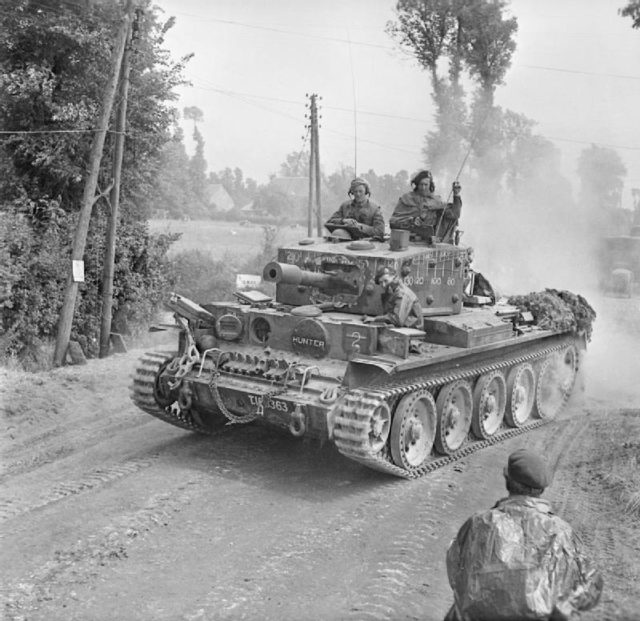
It utilized an Ordnance QF 75 mm, derived from previous versions which were mounted with a QF 6-pounder (57 mm). Depending on the variant, Cromwell’s armored was between 3 and 4 inches thick (76mm – 100 mm).
The first tryouts in August–September 1943 were codenamed Exercise Dracula and held in Britain. Even though the Cromwell proved to be more reliable and generally superior to its older brother, the Centaur, the tank’s performances were still lagging behind the American Sherman tank. Both the Cromwell and the Centaur experienced malfunctions and were sent for re-evaluation.
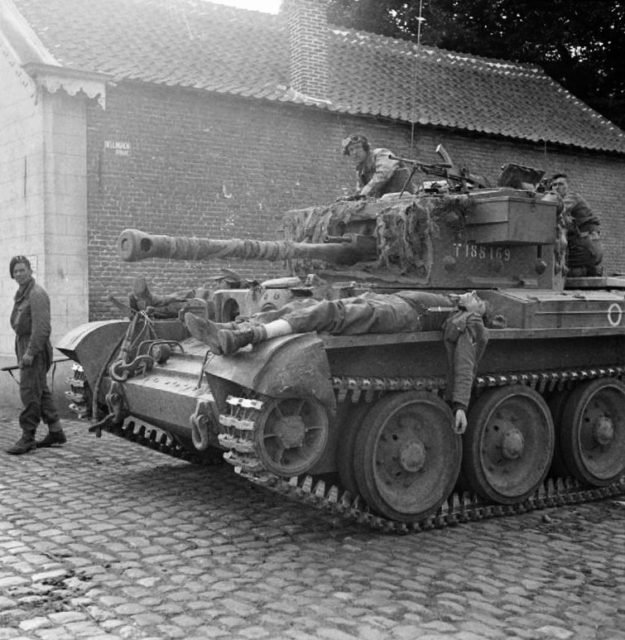
When D-Day arrived, the British had to rely on the yet untested tank which was to be part of the 6th Airborne Division, 7th Armoured Division, 11th Armoured Division, Guards Armoured Division, and 1st (Polish) Armoured Division. The tank was also used by the 1st (Czechoslovakian) Independent Armoured Brigade Group as part of the First Canadian Army in Dunkirk.
Cromwell saw extensive combat in France and Germany, where it was able to tackle many of German standard armored vehicles. Still, its 75 mm gun lacked the ability of armor penetration against the German Tiger ― a trait which made its 6-pounder predecessor famous. Improvements were made by the end of the war by installing the improved 77 mm, but it barely saw any action.
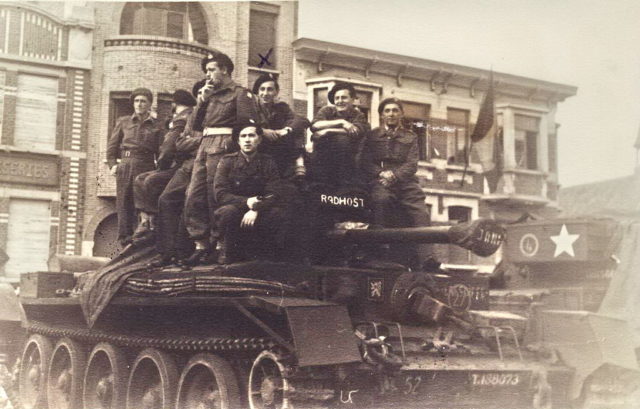
The Centaur was left almost entirely for training purposes, as it failed to overcome its design flaws. Cromwell, on the other hand, was praised for its speed, reliability, and extremely low profile, which made it harder to spot.
After the war, Cromwell was provided to countries such as Australia, Austria, Burma, Cuba, Czechoslovakia, Eire, Finland, France, Greece, Hong Kong, Israel, Jordan, Lebanon, Portugal, South Africa, USSR, and West Germany.
In was retired in the British Army in 1955 and replaced with Tank, Cruiser, Comet I (A34).
